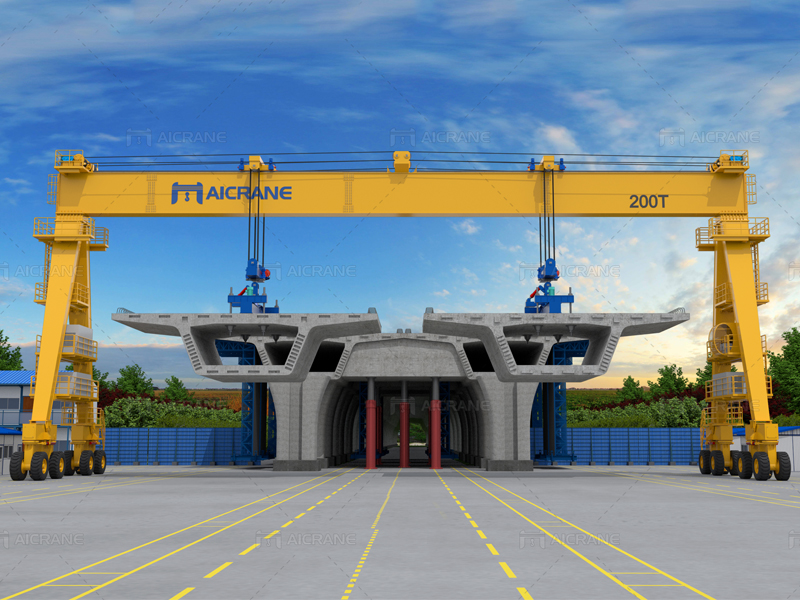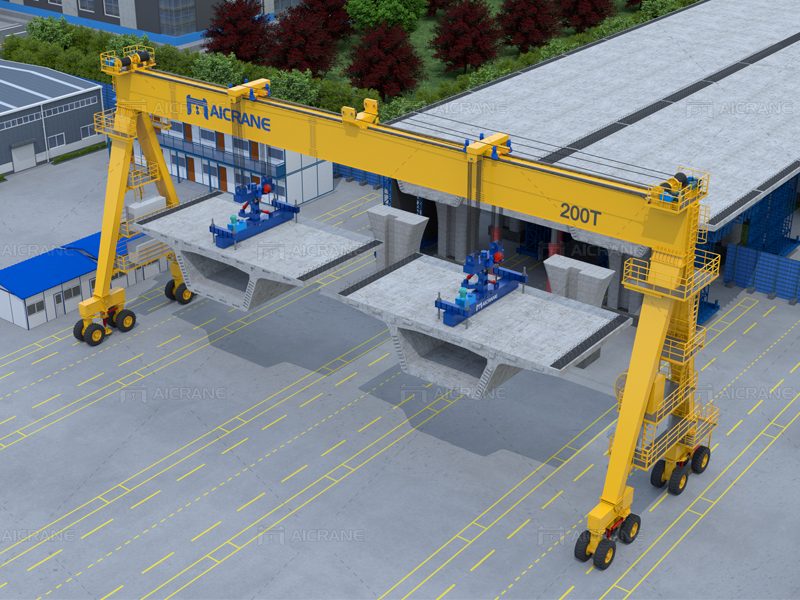In the dynamic world of construction, the demand for innovative and efficient equipment is ever-growing. One such technological marvel that has become indispensable in modern construction sites is the Rubber Tyre Gantry Crane (RTG crane). Known for its versatility, mobility, and robust capabilities, the RTG crane has revolutionized material handling and container operations. In this article, we will explore the various uses and the operational intricacies of the Rubber Tyre Gantry Crane in the construction industry.

Uses of Rubber Tyre Gantry Cranes:
Container Handling: One of the primary applications of rubber tyre gantry cranes is in container terminals. These cranes are designed to efficiently handle containers, facilitating the seamless movement of cargo in and out of ships, trucks, and storage yards. Their ability to lift and transport heavy containers with precision makes them essential for optimizing logistics and supply chain operations.
Construction Material Handling: RTG cranes are not limited to container terminals; they are also employed in construction sites for handling various construction materials. These cranes can lift heavy loads, including steel beams, concrete blocks, and other construction components, providing a cost-effective and time-efficient solution for material handling in large construction projects.
Versatility in Industrial Applications: The versatility of RTG cranes extends beyond container handling and construction sites. They are widely used in industries such as manufacturing, steel production, and mining. These cranes can be customized to meet specific operational requirements, making them adaptable to a wide range of industrial applications.

Operational Mechanism:
Rubber Tyre Mobility: One of the defining features of RTG cranes is their rubber tyre mobility. Unlike traditional gantry cranes that run on rails, RTG cranes are mounted on rubber tyres, allowing them to move freely within the designated area. This mobility eliminates the need for fixed tracks, providing greater flexibility in navigating through construction sites and container yards.
Electric or Diesel-Powered Options: RTG cranes can be powered either by electricity or diesel engines, providing construction companies with options based on their specific requirements and environmental considerations. Electric-powered RTG cranes are more eco-friendly and cost-effective in the long run, while diesel-powered ones offer greater mobility and independence from external power sources.
Advanced Control Systems: The operation of RTG cranes is facilitated by advanced control systems that ensure precision, safety, and efficiency. These cranes for bridge construction are equipped with sophisticated control panels and automation features, allowing operators to manage the lifting and movement of loads with ease. The integration of automation also enhances safety by minimizing the risk of human error.
Telescopic Spreader Beams: RTG cranes are often equipped with telescopic spreader beams, which can be extended or retracted to accommodate different container sizes. This feature enhances the crane’s versatility, enabling it to handle various cargo types without the need for constant adjustments or modifications.
Benefits of Using Rubber Tyre Gantry Cranes in Construction:
Increased Efficiency: The mobility and adaptability of RTG cranes contribute to increased operational efficiency. Their ability to move quickly and handle diverse loads reduces downtime, enhances productivity, and streamlines construction processes.
Cost-Effectiveness: RTG cranes offer a cost-effective solution for material handling in construction projects. Their versatility eliminates the need for multiple specialized cranes, and their mobility reduces the infrastructure costs associated with fixed-track gantry cranes.
Space Optimization: The absence of fixed tracks and the ability to maneuver in tight spaces make RTG cranes ideal for construction sites with limited space. This space optimization is crucial in urban environments where construction projects often face spatial constraints.
Environmental Considerations: Electric-powered RTG cranes contribute to environmentally friendly construction practices by reducing carbon emissions and noise pollution. As sustainability becomes a key consideration in modern construction, the use of electric-powered cranes aligns with eco-conscious initiatives.
Conclusion:
The Rubber Tyre Gantry Crane has emerged as a game-changer in the construction industry, providing a versatile and efficient solution for material handling. From container terminals to construction sites, these cranes offer unmatched mobility, adaptability, and operational precision. As construction practices continue to evolve, the role of RTG cranes is likely to expand, contributing to safer, more efficient, and environmentally conscious construction processes. The integration of advanced technology and the flexibility of rubber tyre mobility position Aicrane rubber tyred gantry cranes as indispensable assets in the modern construction landscape.